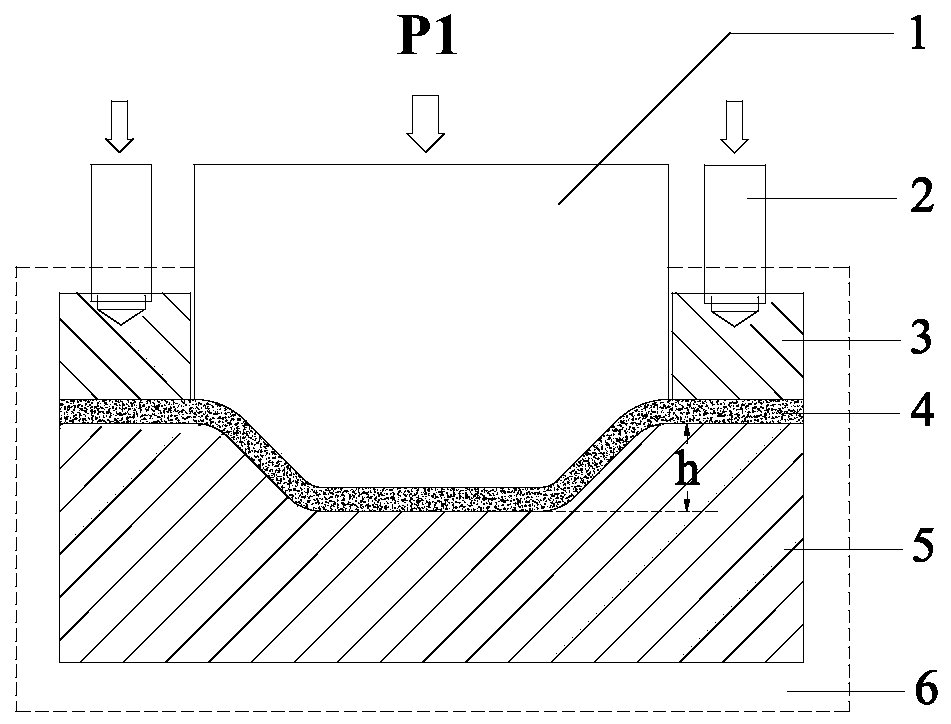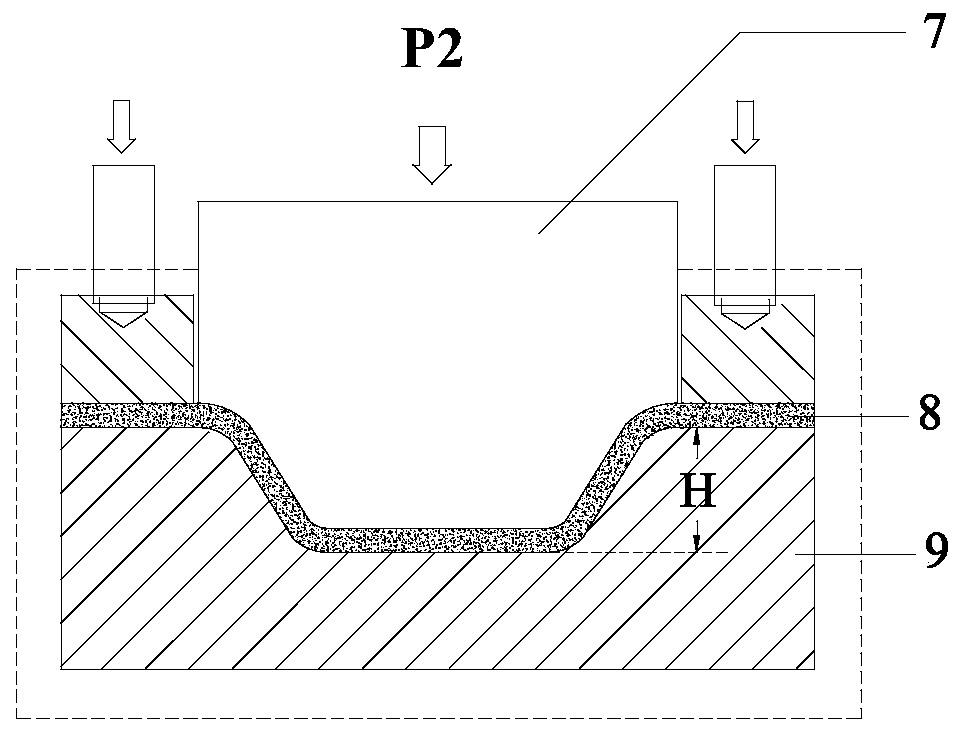Ultralow-temperature formation method of aluminum alloy thin-walled component
A technology of thin-walled components and aluminum alloys, applied in forming tools, metal processing equipment, manufacturing tools, etc., can solve problems such as difficult deformation control, increased sensitivity to process conditions, and easy corrosion, so as to improve the deformation limit and uniform deformation degree, reduce the risk of microcrack formation, improve toughness and corrosion resistance
- Summary
- Abstract
- Description
- Claims
- Application Information
AI Technical Summary
Problems solved by technology
Method used
Image
Examples
Embodiment Construction
[0024] The following examples are intended to further illustrate the present invention, rather than limit the present invention.
[0025] Implementation Series 1
[0026] Implementation Series 1.1
[0027] The Al-Mg-Si alloy (6061 aluminum alloy) annealed plate is used as the raw material, and the thickness is 1.6 mm. After the pre-pressing punch 1, the pre-pressing die 5, the blank holder 3 and the annealed aluminum alloy plate are assembled, they are placed in a low-temperature environment box 6, and the aluminum alloy plate is cooled with a coolant (the coolant is liquid nitrogen) to -180°C. Use a press to apply pressure to the pre-compression punch 1 and the edge dowel 2, the mold clamping depth h is 38 mm, and the mold clamping pressure P1 is 52.5 kN. Unload after clamping the mold, take out the preform 4 for solution treatment at 530°C / 2h and water quenching at 20°C. Then the preform 4, the final pressing punch 7, the final pressing die 9 and the blank holder 3 are a...
PUM
| Property | Measurement | Unit |
|---|---|---|
| thickness | aaaaa | aaaaa |
| thickness | aaaaa | aaaaa |
| thickness | aaaaa | aaaaa |
Abstract
Description
Claims
Application Information
 Login to View More
Login to View More - R&D
- Intellectual Property
- Life Sciences
- Materials
- Tech Scout
- Unparalleled Data Quality
- Higher Quality Content
- 60% Fewer Hallucinations
Browse by: Latest US Patents, China's latest patents, Technical Efficacy Thesaurus, Application Domain, Technology Topic, Popular Technical Reports.
© 2025 PatSnap. All rights reserved.Legal|Privacy policy|Modern Slavery Act Transparency Statement|Sitemap|About US| Contact US: help@patsnap.com



